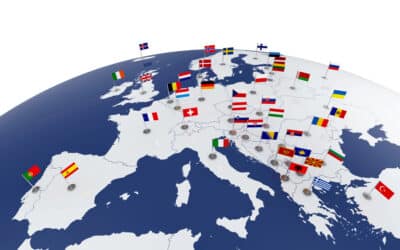Marketing is essentially the art of persuading people to buy what they would not have bought, left to their own devices. This is achieved through manipulating either desires or perceptions of need. People who do not watch television are exposed to much less advertising of consumer products than are people who do. Similarly, the less time one spends surfing the internet, expressing either explicit or implicit interest in buying possible products, the fewer items there will likely be in one’s various shopping carts, not only because marketers now target people with ads catering to their preferences, but also because one will be exposed to fewer advertisements overall. Big corporations have enormous marketing budgets because advertising works: people often buy what they have been persuaded to believe that they should buy, choosing products with familiar names or whose alleged virtues have been extolled to them through one means or another.
The conspicuous consumption induced by mass market advertising campaigns may or may not be a vice, but it would be difficult to deny that people do not believe themselves to need a product which they do not know to exist. Correlatively, if they do not believe themselves to suffer from a particular disease, then they will not typically seek out a medical treatment for it. Before 1997, direct-to-consumer advertising of pharmaceutical products was prohibited in the United States, as it is still today throughout most of the world. The presumption against the direct promotion of drugs to patients themselves is grounded in the concern that untutored persons might be persuaded, purely on the basis of seductive advertisements, to pursue treatments of which they have no need.
Throughout history it has been regarded as the role of doctors to recommend possible courses of treatment to patients who require medical intervention. Modern pharmaceutical companies naturally vie for the attention of doctors, in the hopes that they will choose their products over those of competitors. Physicians are the primary readers of journals and magazines featuring articles relaying the results of clinical trials interwoven with advertisements summarizing the virtues of newly manufactured drugs, along with others still under patent. Since 1997, however, patients themselves have been targeted by drug ads as well, through not only television and radio broadcasts but also the internet. The marketing logic which governs new products in general governs pharmaceutical products in particular.
One must first be informed that a disease exists before attempting to ascertain whether one exhibits its symptoms and should undergo a course of palliative treatment. Healthy people do not usually spend their time fretting over diseases, and throughout most of the twentieth century, people who spent their days poring over medical encyclopedias in order to determine what possible ailments they might possibly suffer from were widely regarded as hypochondriacs, who used medical pretexts to seek out attention and treatment when in fact there was nothing physically wrong with them. Likewise, most parents do not pore over reference books to identify diseases ascribable to their ostensibly healthy children. When the FDA (under the influence of the pharmaceutical industry) lifted the ban on direct-to-consumer advertising of medical products, everything changed, as patients began to request from their doctors pills which they had learned about through commercials specifically designed by marketing departments to maximize sales.
The medical interventions which a doctor is inclined to recommend have always been determined in part by reigning scientific beliefs regarding which diseases exist and can be eliminated or alleviated. Medical conditions, however, are partitioned and diseases delineated by conventions which transform over time. What were for many years deemed “pathologies” sometimes come to be recognized as lifestyle choices or even normal biological conditions. Homosexuality used to be considered an illness by the medical profession, but today that is no longer the case.
Conversely, moving one’s legs around in the middle of the night was not recognized fifty years ago as a mental disorder. Today, however, “Restless Legs Syndrome” (RLS) has an entry in the latest edition of the Diagnostic Statistical Manual of Mental Disorders (DSM-5). A wide range of medications are said by their manufacturers to address this “ailment,” making it entirely possible for a person to conclude on the basis of a television commercial that he or she suffers from RLS and requires psychotropic medication. Similarly, suggestible persons who avoid parties for one reason or another (shyness, a preference for solitude, etc.) may be persuaded by advertisements alone to believe that they suffer from “Social Anxiety Disorder” (SAD). Again, shortly after a massive push by drug companies to influence public school administrators through the distribution of “scientific” survey batteries, difficult to manage children came to be pathologized as well. By now, many millions of them (including a disproportionately large number of foster children, whose medications are paid for by the government) have been prescribed Ritalin and other stimulant drugs, under the assumption that their unruly behavior is symptomatic of a disease: ADHD (Attention Deficit Hyperactivity Disorder).
What has become a profound paradigm shift in modern medicine can be traced to the launch and proactive marketing of Prozac in 1987. At that point in history, many self-styled “scientifically minded” doctors who had become disenchanted with Freudian analysis and other forms of “talk therapy” were persuaded to believe that the mind was nothing more and nothing less than the brain, a physical organ the ailments of which could and should be addressed through chemical means. The swift ascendance of the new “biological psychiatry” propelled forward by what were touted as breakthroughs in the pharmaceutical industry has had effects which ramify through all areas of human life.
Since the launch of Prozac and a panoply of other psychotropes shortly thereafter, the labeling and cataloging of mental illnesses in the ever-proliferating pages of the Diagnostic Statistical Manual of Mental Disorders (DSM) transformed from a more casual endeavor to categorize and organize various symptoms to an unquestioned gospel now embraced by countless medical doctors. Many physicians have no credentials in psychiatry but began prescribing psychotropes, as they became available, to their regular patients dealing with the ordinary troubles associated with life in human society. An array of psychological states formerly considered normal have been pathologized in tandem with a steady stream of new drug launches. This transformation has been propelled forward through the adoption by hospital and insurance company administrators of the DSM as the authoritative reference for determining which treatments to approve.
Remarkably enough, pharmaceutical companies today synthesize psychotropes and then set out to identify novel “diseases” which they can be used to treat. Like all for-profit companies, they use every means at their disposal to ensure that their products succeed. When a product’s patent is set to expire, an assiduous effort is undertaken to identify new applications which can be used to secure a patent extension. (One noteworthy example was the rebranding of Prozac—generic fluoxetine hydrochloride—as Sarafem, which was then marketed in a pink-and-lavender capsule as a “new” drug said to address a newly identified disease, Premenstrual Dysphoric Disorder, or PMDD.) Regardless of what one may think about the fact that 25% (or more) of Americans now regularly take psychotropic medications, the opioid crisis initiated by extremely aggressive ploys to sell highly addictive prescription pain pills serves as a stark reminder that marketers are concerned above all with pushing product.
In some ways, none of this is new. Snake oil salesmen and purveyors of so-called panaceas have existed since time immemorial. Prudent people will pause before purchasing (much less ingesting) any product, guided by the ever-handy precept Caveat Emptor! In view of the ongoing opioid crisis, set in motion by the rampant overprescription of highly addictive opiate drugs, many consumers are likely aware that drug companies pay representatives to peddle their products to doctors. What remains less known is that they also hire ghostwriters to pen journal articles, and scientists to design and fund clinical trials, the results of which remain their prerogative to publish or, in the case of negative results, to withhold.
What by now has moved beyond a paradigm shift to constitute a pharmaceutical industry revolution has been marked by four distinct stages, which was perhaps predictable, given what has been going on since 1987. Having first wooed doctors directly through the use of representatives sent out to medical practices to talk up new products and distribute free samples, pharmaceutical companies next captured professional journals and regulatory bodies such as the FDA (Food and Drug Administration) and the CDC (Centers for Disease Control and Prevention). Medical research is extremely expensive to carry out, and massive funding provided by the ever-more profitable drug industry to universities and research centers further ensured that studies likely to receive financial support (those with profit potential) were naturally pursued. This infiltration into professional, regulatory, and research organizations created a direct feedback loop, whereby clinical physicians (not themselves researchers) were persuaded by institutional authorities to use the products promoted by them. The third stage of this revolution involved wooing patients, through direct-to-consumer advertising, to ask their doctors to prescribe products to them, thus creating a further feedback loop, given that doctors have financial incentives for retaining their patients.
The next logical step in this quest to maximize profit by all means necessary was to infiltrate and capture governments themselves. Governments alone, after all, have the power to force their citizenry to do what they want them to do, by threatening a variety of punishments should they fail to acquiesce to their decrees. By making noncompliance with their dictates illegal, governments can coerce their populace to do any- and everything, from sacrificing their very own lives in ill-begot wars, to undergoing experimental treatments of which they have no medical need. Once merely hypothetical, the latter scenario—what is tantamount to medical fascism—has been realized in a disturbing number of countries since 2020.
Looking at what has transpired from the perspective of marketing alone, we can see that rather than appealing only to doctors and patients, pharmaceutical companies have now secured seats at the table with government leaders, who have been persuaded to purchase millions of their remedies to distribute “free” to their citizenry. In fact, the entire apparatus undergirding perceptions of the global COVID-19 pandemic, from stickers to masks to tests, has involved a complex nexus of companies contracted by governments, analogous to the symbiosis between government and military industry. President Biden, who holds the record for presidential campaign contributions received from the pharmaceutical industry, recently purchased 1 billion at-home COVID-19 test kits and 400 million N95 masks to be distributed from late January 2022. This initiative virtually guarantees that prevailing perceptions of a “health emergency” will persist at least until Pfizer’s new “variant-ready” shot is ready for distribution in March 2022.
Collaboration between the pharmaceutical industry and governments is not new. Pro-prescription forces captured the Veterans Administration (VA) many years ago. Perhaps the ever-chipper Donald “Stuff Happens” Rumsfeld deserves some credit in this regard, as he chaired pharmaceutical giant G.D. Searle & Company before serving as defense secretary under George W. Bush. In any case, throughout the War on Terror, soldiers and veterans suffering from PTSD were prescribed massive quantities of psychotropes. Even in the face of an epidemic of suicides, which has only gotten worse over time, troops continue to be offered cocktails of drugs, not talk therapy, to help them to cope with their psychological distress.
Another example of obvious influence by the pharmaceutical industry has been the widespread marketing by governments of flu vaccines with middling efficacy to their populations, with “free” shots made readily available to everyone just by walking into their local drugstore. In the case of COVID-19, a novel mRNA technology never before tested on human beings was labeled a vaccine—before knowing whether it prevented infection and transmission—and marketed on behalf of the manufacturers by governments themselves.
Given this background, it may seem at first glance that what we are witnessing constitutes a continuum in pharmaceutical company influence. In reality, however, it is not a quantitative but a qualitative leap from persuasive advertising (even when misleading) to government coercion. Nonetheless, having come to believe that the government has their best interests in mind, many citizens have been persuaded to go along with whatever measures their leaders impose, up to and including obligatory enrollment in experimental trials.
Apparently oblivious to the Nuremberg Code, many Western democratic countries, including France, Germany, Austria, Italy, Belgium, Canada, Australia and New Zealand, have now instituted mandates requiring their citizens to undergo injection of an experimental substance as a condition on their participation in civil society. People in these countries are being refused entry to social venues, retail stores, and even forbidden from working, if they do not present a health “passport” documenting that they have undergone the COVID-19 treatment manufactured by firms such as Pfizer and Moderna. Further coercive measures, affecting nearly everyone everywhere, have included the denial of the freedom to travel to most countries on the planet without first presenting required health “credentials” and in many cases submitting to an inconvenient and expensive period of quarantine. In some places, internment camps have been erected to house persons exposed to COVID-19 and who refuse to undergo the prescribed “treatment” for a disease which kills less than 1% of those infected and which specifically targets elderly persons already suffering from serious health problems.
In the face of the harsh restrictions, which are being applied even to the members of cohorts at minimal risk, some citizens have persisted in resisting and are now facing hefty fines and penalties (including unemployment) for their refusal to comply. In truth, these dissidents, far from being criminals, simply disagree with the government’s risk-benefit analysis regarding the wisdom of ingesting this particular “remedy,” which we now know, from data in Israel and elsewhere, prevents neither infection nor transmission of the original virus and may have no value whatsoever in the case of the Omicron variant. Logically enough (to anyone familiar with basic concepts of evolution), the virus appears by now to have mutated so as to evade the spike protein antibodies created in response to the foreign substance coded for by the mRNA injections. Vaccine enthusiasts continue nonetheless to rally for the inoculation of everyone everywhere with follow-up booster shots of the elixir created to address the original virus, not the mutant variants.
Marketing deployed by governments is propaganda, the promotion of ideas and ideology. What we are now witnessing, however, unprecedented in history, is an amalgamation of pharmaceutical interests with governments to forge a pharma-techno-fascist regime requiring “health passports” of citizens in order to be able to participate in society. Following the tried-and-true playbook for military intervention, leaders and pundits have claimed that we are on a “war” footing in “combating” COVID-19, which is taken to entail both that “the evil enemy” must be defeated and that the citizenry must make sacrifices to see that this be done. Over the course of two years, what began as “stay home two weeks to flatten the curve” has transmogrified to “undergo mandatory injection of a foreign substance at regular intervals as specified by the relevant authorities—or else face ostracism and criminal penalties.”
This fourth stage of the pharma revolution should be recognized for what it is: a veritable coup, for entire governments have now been captured by the drug industry. But if most countries still prohibit direct-to-consumer advertisement of drugs, how did this coup come about? The primary tactic in securing mass compliance among large portions of the populace in countries all over the world has been the capture of news programs by the pharmaceutical companies, which serve as financial sponsors of major networks. When the news is sponsored by vested interests in a particular industry, then it becomes difficult to distinguish facts from propaganda, just as in the case of wars promoted by television newscasters under a guise of patriotism, when in fact they receive funding from for-profit companies in military industry.
People are now being told by leaders and their spokespersons, including the so-called journalists who parrot them, that they must undergo whatever medical treatment their government dictates, as specified by public health organizations which have been altogether colonized by the pharmaceutical industry. These significant conflicts of interest are ignored by pundits and the populace, just as in wartime, on the grounds that only those “in the know,” that is, with ties to the industry in question, are qualified to offer competent advice. This same line of reasoning has been incessantly repeated throughout the mainstream media in calls for the censorship of divergent opinions, even among fully credentialed medical doctors and researchers.
The claim to be fighting a “war” against COVID-19 opened the door to not only censorship but also quasi-martial law and precisely the sorts of lockdowns, quarantines and curfews we have seen implemented in the name of public health, even as statistical data emerged to refute what many had hoped would be the efficacy of such measures. When social distancing and masking failed to stop the virus, pharmaceutical companies came forward with their usual claims of magic pill cures for the scourge of this new disease.
The history of the ascendance of the drug industry since 1987 reveals that pharma marketers are among the savviest beasts around, and the persuasion of government officials to coerce their citizenry to undergo medical treatments should be acknowledged for what it is: a brilliant marketing scheme. Having already reaped the benefits of their massive campaigns to lure as many people into the use of “comfort” and “lifestyle” drugs as they possibly could, with targets ranging the gamut from infants to nonagenarians, and by now including even family pets, pharma firms have during the fourth stage of this revolution capitalized on the appearance of COVID-19 on the scene to peddle their wares to nearly every living person on the planet. The collaboration of Pfizer, Moderna, and other companies with governments has been deceptively depicted as philanthropic, which contradicts not only the purely profit-driven nature of publicly traded companies but also the heavy-handed, coercive measures being deployed by governments against people who decline treatment.
One must admit that labeling the novel m-RNA therapy, which is helpful to those who are vulnerable to COVID-19, a vaccine was itself a slick trick, for it not only offered the product companies indemnity from legal prosecution in the event of adverse effects (under the PREP act) but also made it possible to lump anyone who resisted into the class of Untermenschen derided throughout the media and by an uncanny coalition of celebrities—ranging from Howard Stern to Stephen King to Jennifer Aniston to Neil Young—as antivaxxers. The self-righteous pro-vax mob may have no actual understanding of the distinction between absolute risk reduction (ARR) and relative risk reduction (RRR), an ignorance capitalized upon by marketers of the various shots being provided “free” to citizens, but they do know whom to believe: Fauci & Co.
The initial marketing blitz for the shots boasted a miraculous 95% efficacy rate in avoiding severe illness and death, which was slyly suggested to apply to all persons, when in fact it applied much more narrowly to those vulnerable to the virus, particularly advanced seniors who also suffer from multiple health problems, making it difficult for their bodies to defeat the virus. Younger and healthier persons are capable of avoiding hospitalization and death with or without the injections. Yet the initial “95% efficacy” claim has been used in calls for people from all age groups, even those at no significant risk from the virus, to undergo vaccination. When Biden’s press secretary, Jen Psaki, despite being fully vaccinated, became infected with and recovered from COVID-19, she sang Pfizer’s favorite refrain, that her illness was mild only as a result of the vaccine. Straight from the government’s mouth, this is manifestly disinformation, the equivalent of a marketing jingle, given the low statistical probability that a healthy woman in her forties might suffer severe illness from or be killed by COVID-19.
It is also disinformation, continually pumped out by government propagandists, to mislabel people who raise specific, science-based concerns about the experimental mRNA treatments as antivaxxers, even when they have objections neither to time-tested medical treatments nor to vaccines in general. On the basis of such propaganda, those who refuse to comply are being more and more sternly admonished for shirking what is painted as every citizen’s duty, and because public health authorities such as Anthony Fauci continue to label dissenters themselves as purveyors of “disinformation,” much of the populace is inclined to fall in line, chiming in with government propagandists to denounce anyone who dares to disagree.
A variety of other marketing tricks have been deployed throughout the Coronapocalypse as well, from the denial of the reality of natural immunity, to the focus on anecdotal cases of outliers who supposedly demonstrate the vulnerability of everyone, in every age and health cohort, to the virus. Needless to say, outliers on the vaccine adverse effects curve are entirely ignored. Similarly, the very fact that the average age of COVID-19 victims has been higher than their life expectancy in some places is not a topic of discussion on any of the programs relentlessly promoting universal vaccination.
Just as antiwar activists are denounced by hawks as traitors and cowards, the push to mandate medical treatments at the behest of those advising the government has involved characterizing citizens who refuse to comply as ignorant, stupid, selfish, and even evil. Fear is a powerful motivator to action, as is demonstrated by both the history of warfare and the history of drug marketing. Tell people that the enemy (whether a foreign government or a disease) is going to kill them, and they will volunteer to kill whoever the enemy is claimed to be, or at the very least pay others to do so. If some of their fellow human beings are the vehicle of evil, then they, too, will need to be eliminated or contained.
The twist in this fourth stage of the pharma revolution is that now unvaccinated persons have been cast as “the enemy,” with all that this implies, up to and including calls to restrict their movement and access to social spheres. Thus we find leaders such as Canadian Prime Minister Justin Trudeau asking unfacetiously, with no apparent irony, whether unvaccinated persons should be “tolerated.” President of France Emmanuel Macron has expressed similar scorn for the unvaccinated inhabitants of his land, claiming that he will do whatever is necessary to force them to comply with the medical mandates severely restricting their activities since the summer of 2021. It matters perhaps little at this point whether functional sociopaths in high places became that way naturally or through the ingestion of psychotropes. They are who they are. Our task remains to defend our shrinking freedoms from those who would take them away.
The attempt of ostensibly democratic governments to usurp the bodily autonomy of their citizenry through the use of propaganda and coercion is an appalling development, but it is not yet too late to disabuse those led astray. Recognizing the pharmaceutical industry revolution of the past thirty-five years is the key to understanding how we arrived where we are today.
































